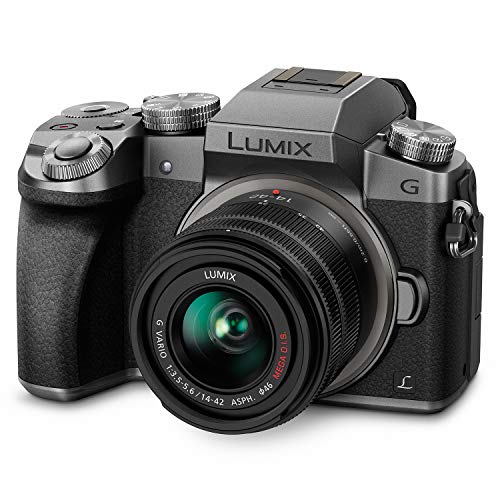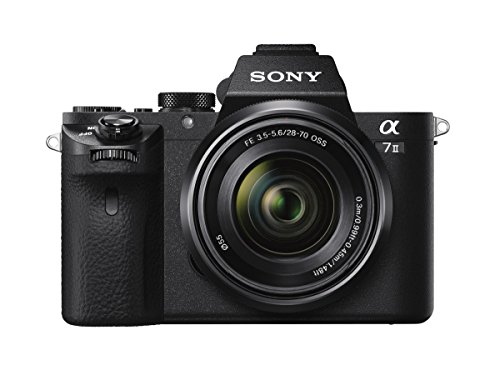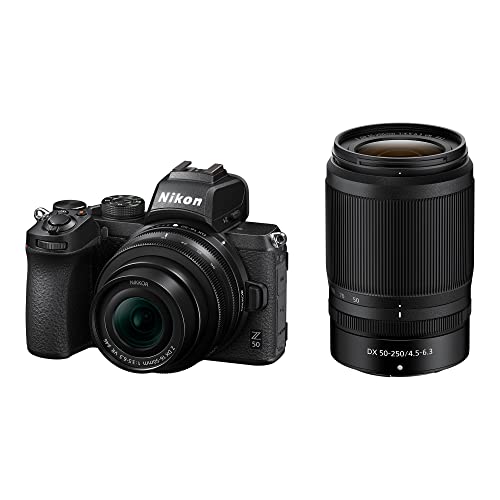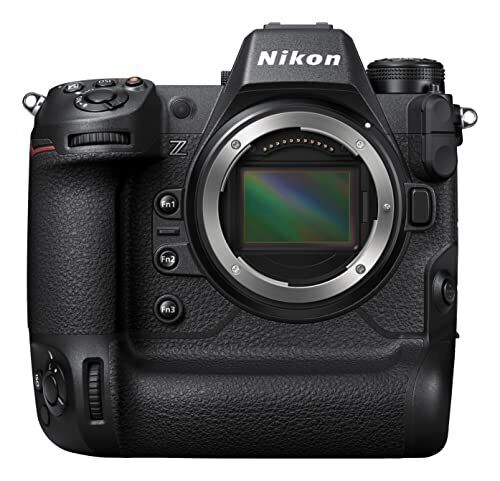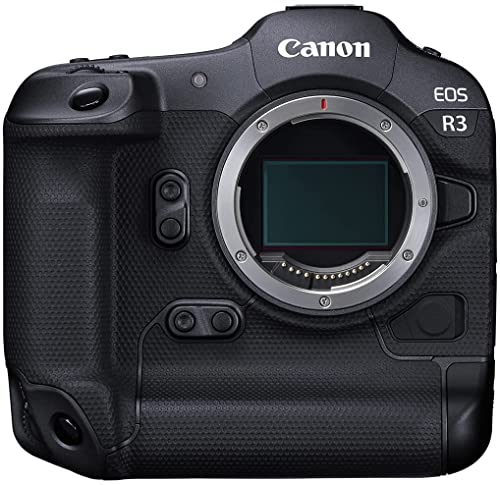MIRRORLESS CAMERAS VS DSLR: WHICH ONE IS RIGHT FOR YOU?
Key Takeaways
- High-speed shooting capabilities differ between mirrorless cameras and DSLRs, with mirrorless cameras excelling in this area due to lack of moving mirror mechanisms.
- Customization and control options vary, with DSLRs typically offering more physical buttons and dials for direct access to settings, while mirrorless cameras often rely more on touchscreen interfaces.
- Durability and build quality are key considerations, as DSLRs are generally bulkier and more robust, while mirrorless cameras are lighter and more compact but may be perceived as less rugged.
- Price range and affordability differ, with entry-level DSLRs being more budget-friendly than mirrorless cameras, which often require a higher initial investment.
- Ergonomics and handling vary between the two types of cameras, with DSLRs having larger grips and better balance for longer shooting sessions, while mirrorless cameras are more lightweight and portable.
- Connectivity and sharing options are important features to consider, with mirrorless cameras typically offering more advanced wireless capabilities for instant sharing and remote control.
- Post-processing and editing options should be taken into account, as DSLRs may offer more flexibility in terms of file formats and editing software compatibility compared to some mirrorless cameras.
- Future-proofing your investment is crucial, with DSLRs having a longer history and wider range of compatible lenses and accessories, while mirrorless cameras are rapidly evolving and may offer more cutting-edge technology in the long run.
Continuous Shooting Speed
When considering continuous shooting speed, it is crucial to acknowledge the differences between mirrorless cameras and DSLRs. Mirrorless systems have rapidly evolved to match and even surpass DSLR equivalents in this aspect, thanks to advancements in technology. The absence of a moving mirror in mirrorless cameras allows for faster burst modes, enabling photographers to capture quick-moving subjects with precision. Additionally, the electronic viewfinders in mirrorless cameras provide real-time feedback, contributing to improved photo-taking efficiency compared to the rear screen used in DSLRs.
Furthermore, the continuous shooting speed of a camera impacts the selection process for photographers seeking rapid capture capabilities. Mirrorless cameras stand out for their enhanced burst mode performance, making them a preferred choice for those prioritizing speed and efficiency. While DSLRs continue to offer reliable continuous shooting speeds, the mirrorless camera's innovative design and electronic components set a new standard for capturing fast-paced action. In weighing the options between DSLR and mirrorless cameras, understanding the nuances of continuous shooting speed is paramount for selecting a camera that aligns with specific shooting needs and preferences.
Burst Mode and Capture Rate
Burst mode and capture rate are vital features to consider when evaluating the performance of digital cameras. While some photographers value a high burst rate to capture fast-action sequences, others may prioritize single-shot precision. DSLR counterparts often excel in burst mode capabilities due to their optical viewfinders and mirror mechanisms, offering rapid and continuous shooting. On the other hand, mirrorless lenses can provide quieter and more seamless shooting experiences, making them preferred for certain types of photography. Understanding your personal preference in shooting style is key to selecting the camera that aligns with your needs.
Lens designs play a significant role in determining the efficiency of burst mode and capture rate. Different lenses have varying autofocus systems and motor speeds, impacting how quickly the camera can focus and capture multiple images in succession. Sharp and responsive lens designs contribute to improved performance during continuous shooting, ensuring that each shot is accurately focused and captured. When comparing DSLR counterparts to mirrorless options, consider the compatibility of lenses with the camera body and how it influences the overall speed and precision of image capture.
Customization and Control
When it comes to customization and control in photography, one crucial aspect to consider is the ability to engage in silent shooting. Many camera manufacturers have recognized the importance of silent shooting modes in both DSLR and mirrorless cameras for discreet and unobtrusive photography. This feature allows photographers to capture moments without the distraction of a noisy shutter button, crucial in environments where silence is key. Furthermore, the customization of frame rates and autofocus systems plays a vital role in tailoring the camera's settings to suit different shooting scenarios, whether it be fast-paced action shots or still portraits.
Delving into the realm of customization within cameras, photographers are often presented with a myriad of options by various camera manufacturers. Understanding the nuances of adjusting settings and preferences can elevate one's photography experience. It is important to explore the diverse interfaces offered by different manufacturers to find a system that aligns with individual preferences. By mastering the customization capabilities of one's camera, photographers can harness greater control over their craft and unleash the full potential of their equipment.
Understanding Interface Options
When delving into the camera world, one key aspect that sets the Canon EOS R3 and Nikon Z9 apart from the average mirrorless camera is their advanced shooting mode capabilities. The mirror flips in these high-end models with unparalleled speed and precision, resulting in an impressive burst mode and capture rate. This ensures that photographers can seamlessly capture fast-moving subjects with clarity and accuracy, making these cameras ideal for sports, wildlife, and action photography.
Understanding the interface options of the Canon EOS R3 and Nikon Z9 is paramount for maximizing efficiency and productivity in your photography workflow. Both cameras offer intuitive user interfaces that allow for seamless navigation of settings and controls. Customization of buttons and dials enhances the user experience, enabling photographers to tailor the camera to their specific shooting style and preferences. Whether adjusting exposure settings on the fly or switching between shooting modes with ease, the interface options of these cameras cater to the needs of professional photographers and enthusiasts alike.
| Camera Model | Shooting Mode Capabilities | User Interface | Customization Options |
|---|---|---|---|
| Canon EOS R3 | Advanced burst mode and capture rate | Intuitive and user-friendly | Customizable buttons and dials |
| Nikon Z9 | High-speed mirror flip for fast-moving subjects | Easy navigation of settings and controls | Personalized camera configuration |
Nikon Z9 Mirrorless Camera Body Only - 1669
Capture every moment in stunning detail with the Nikon Z9 Mirrorless Camera Body Only
Product information
$5,649.99
$4,519.95
Product Review Score
4.76 out of 5 stars
113 reviews
Product links
Nikon Z9 Mirrorless Camera Body Only - 1669
Capture every moment in stunning detail with the Nikon Z9 Mirrorless Camera Body Only
Product information
$5,649.99 $4,519.95
Product Review Score
4.76 out of 5 stars
113 reviewsProduct links
$4,499.00
4.33 out of 5 starsCanon EOS R3 Camera Body
Unlock the next level of photography with the Canon EOS R3 Camera Body
Product information
Product Review Score
Product links
Durability and Build Quality
Durability and build quality are paramount considerations when selecting a mirrorless camera body, especially with the advancements in technology and the competitive lineup of full-frame mirrorless cameras varying from the Canon RF series to the OM System offerings amongst others. The construction materials used in these cameras, such as the robust magnesium alloy frames found in the Nikon D780, play a crucial role in ensuring longevity and resilience during intensive usage. If you are an enthusiast or professional photographer who demands reliability in continuous shooting scenarios, investing in a sturdy mirrorless camera body will be an essential aspect to consider.
Taking into account the wear and tear of regular use, opting for a mirrorless camera body with superior construction and weather-sealed components like those seen in the Nikon D780 can provide added assurance while shooting in challenging outdoor conditions. Despite the competitive nature of the market, models from respected brands like Canon, OM System, and Nikon are known for their exceptional build quality, ensuring that your investment remains protected against the rigors of regular use. When assessing the durability of a camera for continuous shooting, the quality of the materials used, the ergonomics of the design, and the overall construction play pivotal roles in delivering a seamless and reliable shooting experience.
Comparing Construction Materials
When delving into the realm of digital cameras, one key aspect to consider is the construction materials used in their making. Mirrorless cameras, such as the Canon EOS-1D X Mark III, often boast a more lightweight design in comparison to traditional DSLRs. This advantage can be particularly beneficial when using telephoto lenses, as the overall weight of the setup can be significantly reduced, making extended use more comfortable for photographers employing them for prolonged periods. Furthermore, the trend towards mirrorless systems contributes to a more compact and portable camera body that is easier to carry and handle, offering users enhanced flexibility and freedom in capturing moments that might have otherwise gone unnoticed by the 'naked eye’.
In addition to the advantage of mirrorless cameras, the choice of construction materials also impacts the overall durability and longevity of the camera body, especially when considering the mounting and removal of interchangeable lenses. High-quality materials not only ensure a sturdy foundation for the imaging sensor and lens mount but also provide added protection against wear and tear over time. By opting for cameras constructed with robust and reliable materials, photographers can rest assured that their investment in premium telephoto lenses and other accessories is supported by a solid foundation that can withstand the rigors of regular use, thus elevating the overall shooting experience.
Price Range and Affordability
When considering the price range and affordability of the latest camera models like the EOS R10, it's essential to take into account the features and specifications that come with the cost. The advanced technology packed into the R10, including its high-speed shooting capabilities and compatibility with RF-S lenses, plays a significant role in determining its price point. While the initial investment in a camera like the EOS R10 may seem higher than your average DSLR, the benefits of its superior LCD screen, optimal for shooting video and reviewing images, justify the price for professionals and enthusiasts looking to elevate their photography game.
In the realm of photography, affordability is often a subjective term that varies from one individual to another. It is crucial to consider the long-term value and performance of a camera in relation to its cost. For instance, while the initial price tag of the EOS R10 may be higher compared to entry-level DSLRs, the investment is essentially future-proofing your gear with cutting-edge features and functionalities. Additionally, the ability to customize the camera to suit your shooting style, coupled with its seamless connectivity and innovative post-processing capabilities, makes cameras like the EOS R10 worth the investment for those looking towards the future of photography.
Evaluating BudgetFriendly Options
When considering budget-friendly options for the latest mirrorless cameras or DSLR models, it's essential to focus on key features that matter most to you. If recording video is a priority, look for models that offer 8K video capabilities without compromising on superior autofocus performance. Additionally, assess the range of compatible lenses and accessories available within your budget to ensure versatility in your photography setup. By researching and comparing different options, you can find a camera that meets your specific needs without overspending.
Investing in a budget-friendly camera doesn't mean sacrificing quality. Many entry-level models now include advanced features previously reserved for higher-end cameras. Look for cost-effective options that still provide exceptional image quality and performance for both photography and videography. Consider the long-term investment value of the camera, factoring in the potential for future upgrades or additions to your gear collection. By carefully evaluating your priorities and needs, you can find a budget-friendly camera that not only fits your current requirements but also offers room for growth and expansion in the future.
Ergonomics and Handling
Assessing the ergonomics and handling of a camera is crucial for a photographer, especially when considering the varying shooting speeds and advanced features of modern equipment. When comparing mirrorless technology to traditional DSLRs, the size and weight of mirrorless bodies often provide a more compact and lightweight option. However, entry-level DSLRs like the Nikon D850 may offer a more substantial grip and intuitive button placement, enhancing overall comfort during extended shooting sessions. Additionally, the accessibility of the autofocus (AF) sensor and customizable controls play a significant role in how effectively a photographer can navigate through different shooting scenarios, ensuring seamless operation and precise adjustments while capturing images.
Moreover, understanding how a camera feels in hand can greatly impact the shooting experience. The tactile response of buttons, the depth of the grip, and the placement of essential controls are all factors that contribute to ergonomic design. Mirrorless bodies, despite their smaller size, can be designed to provide a comfortable grip and customizable buttons for quick access to essential settings. Conversely, high-end DSLRs like the Nikon D850 may offer a robust build quality ideal for professionals, with weather-sealed construction and durable materials that enhance overall reliability in various shooting conditions. By carefully evaluating ergonomic considerations alongside shooting speeds and technological capabilities, photographers can select a camera that not only meets their technical requirements but also offers a comfortable and user-friendly shooting experience.
Assessing Comfort and Grip
When evaluating the comfort and grip of a camera, it's essential to consider how well it aligns with your shooting style and preferences. For instance, some photographers may prefer the ergonomic design of Nikon and Pentax DSLRs, which offer a more substantial feel in hand due to their larger bodies and traditional button layout. On the other hand, mirrorless cameras like the Sony A7S III, known for their sleek and compact build, may appeal to those seeking a more lightweight and portable option. While DSLRs are equipped with older technology compared to mirrorless cameras, some photographers appreciate the familiar feel and handling they provide. It's crucial to test different camera models to determine which design offers the most comfortable grip for long shooting sessions.
The L-Mount Alliance has also introduced innovative designs that combine the robustness of DSLR design with the compactness of mirrorless cameras. These cameras feature a comfortable grip that ensures a secure hold during shooting, making them an appealing option for photographers who value both form and function. Additionally, advancements in mirrorless technology have significantly improved focusing speeds, allowing photographers to capture fast-moving subjects with precision. When assessing the comfort and grip of a camera, consider how well it fits in your hand, its weight distribution, and the overall ease of use. By prioritizing comfort and ergonomics, you can ensure a seamless shooting experience that enhances your creativity and efficiency.
Connectivity and Sharing Options
When considering the connectivity and sharing options of high-end mirrorless cameras, the key distinguishing factor often lies in the advanced technology integrated into these models. Cameras such as those from the Canon EF-M and RF series are equipped with Wi-Fi, Bluetooth, and NFC capabilities, allowing seamless transfer of images to smart devices for quick sharing or remote shooting. This connectivity aspect not only enhances the user experience but also reflects the shift towards more intuitive and user-friendly features in modern digital cameras with a digital sensor.
In comparison to DSLRs, higher-end mirrorless cameras provide a streamlined approach to connectivity with their compact designs and innovative features. With the ability to directly upload images to social media platforms or cloud storage through built-in Wi-Fi and Bluetooth, users can easily share their photographs without the need for additional accessories. The compatibility with prime lenses further enhances the shooting experience, ensuring sharp and high-quality images that can be quickly transferred for editing or sharing purposes. Mirrorless cameras offer not only superior connectivity options but also open up a world of creative possibilities for photography enthusiasts and professionals alike.
Exploring Wireless Features
Wireless features have become a significant selling point for modern cameras, especially in the realm of mirrorless counterparts. Unlike DSLR systems that rely on a mirror mechanism in capturing images, mirrorless cameras typically lack this component, allowing for more compact designs and seamless integration of wireless capabilities. One notable advantage of wireless connectivity is the ease of transferring files directly from the camera to other devices like smartphones or tablets. Additionally, some mirrorless cameras boast advanced features like continuous autofocus during wireless shooting, ensuring that the camera will capture crisp and clear shots even in dynamic environments.
When comparing wireless capabilities between DSLR and mirrorless systems, users may notice differences in speed and reliability. Mirrorless cameras often excel in offering faster and more consistent wireless connectivity compared to their DSLR counterparts. This enhanced speed can be beneficial for tasks such as remote shooting or quickly sharing images on the go. By harnessing the power of wireless technology effectively, photographers can streamline their workflow and enhance their overall shooting experience significantly.
- Seamless integration of wireless capabilities in mirrorless cameras
- Ease of transferring files directly to smartphones and tablets
- Advanced features like continuous autofocus during wireless shooting
- Mirrorless cameras offer faster and more consistent wireless connectivity than DSLR systems
- Enhanced speed benefits for remote shooting and quick image sharing
- Streamlining workflow and enhancing shooting experience through wireless technology
PostProcessing and Editing
When it comes to post-processing and editing capabilities of entry-level mirrorless cameras, understanding the software compatibility becomes crucial. Most entry-level mirrorless cameras come with basic editing software that may not be as comprehensive as those offered with professional cameras. However, these editing tools are designed to cater to beginner photographers who are just starting to explore the world of digital photography. For individuals transitioning from compact cameras or smartphones to aps-c cameras, these post-processing options provide a seamless way to enhance and adjust their photos before sharing them.
In the dynamic camera market where sensor sizes play a significant role in how cameras capture images, entry-level mirrorless cameras stand out for their versatility and ease of use. While not as advanced as some professional cameras in terms of post-processing capabilities, entry-level mirrorless cameras offer a wide range of editing tools to help users refine their photos. This feature makes them ideal for photographers looking to hone their skills without investing in more expensive equipment upfront. As the camera market continues to evolve, entry-level mirrorless cameras are becoming increasingly popular due to their combination of affordability and impressive post-processing capabilities.
Understanding Software Compatibility
When considering which mirrorless camera to invest in, it is crucial for professional photographers to assess the software compatibility offered by different mirrorless camera makers. Compatibility with editing software such as Adobe Lightroom or Capture One is essential in seamlessly integrating the post-processing workflow. Many mirrorless camera manufacturers provide their proprietary editing software, and understanding how well these programs work with industry-standard applications is pivotal. Moreover, equivalent DSLR software is often available for certain mirrorless models, ensuring a smooth transition for photographers familiar with traditional DSLRs.
For professional photographers aiming to make a seamless switch to mirrorless systems, evaluating the software compatibility becomes a critical factor in optimizing their workflow. By delving into the software offerings of various mirrorless camera makers, photographers can determine the level of post-processing efficiency and compatibility with their existing editing software. Additionally, understanding the software updates and support provided by manufacturers offers insights into the long-term viability of their investment in a mirrorless camera. Hence, a thorough examination of software compatibility is indispensable for photographers looking to enhance their photography experience with a mirrorless camera.
FutureProofing Your Investment
Investing in a camera with future-proof features ensures longevity and adaptability in a rapidly evolving technological landscape. Upgradability is a crucial factor to consider while assessing the longevity of your camera model. Cameras that offer compatibility with updated software, firmware, and accessories help stay abreast of the latest advancements without necessitating a complete overhaul of your equipment. Moreover, considering the potential for firmware updates that enhance performance or introduce new capabilities, browsing through user feedback and manufacturer reputation can give insights into how well a particular camera can adapt to future innovations.
Future-proofing your photography gear involves anticipating trends in the industry and gauging how well your equipment can withstand those changes. Assessing the compatibility of your camera with emerging technologies, such as augmented reality features or artificial intelligence integrations, can provide a glimpse into its adaptability over time. A camera that offers a balance between cutting-edge functionalities and timeless features ensures that your investment remains relevant and efficient for years to come. As camera technology continues to evolve rapidly, futureproofing your investment is key to maximizing the utility and performance of your photography gear.
Assessing LongTerm Viability
When evaluating the long-term viability of a camera investment, it is crucial to consider aspects beyond immediate functionality. Factors such as software support and firmware updates play a significant role in ensuring that your camera remains compatible with evolving technology and continues to meet your needs over time. Additionally, assessing the manufacturer's track record for providing consistent updates and improvements can give insight into the future performance and longevity of the camera model. This proactive approach can help you avoid potential obsolescence and maximize the utility of your investment.
Moreover, anticipating advancements in the photography industry is essential for future-proofing your camera choice. Opting for a model with versatile features and customizable options can ensure that it adapts to changing trends and technological developments. Analyzing the camera's compatibility with emerging accessories and attachments can also contribute to its long-term usability and relevance. By staying informed about industry trends and innovations, you can make an informed decision that aligns with your long-term photographic goals and sustains the value of your camera investment.
Conclusion
In conclusion, the continuous shooting speed of a camera is crucial in capturing fast-paced action and fleeting moments with precision and clarity. By understanding burst mode and capture rate, photographers can optimize their shooting experience to align with their specific needs and preferences. Customization and control play a significant role in enhancing the user experience, as familiarity with interface options allows photographers to tailor settings and functions to suit individual shooting styles effectively.
Durability and build quality are paramount considerations when selecting a camera, as construction materials directly impact the longevity and resilience of the device. Price range and affordability are key factors for many photographers, requiring a comprehensive evaluation of budget-friendly options that offer optimal performance and features. Ergonomics and handling are essential for sustained comfort and grip during extended shooting sessions, contributing to the overall usability and satisfaction of the camera.
FAQS
What is the main difference between mirrorless cameras and DSLRs?
The main difference is that mirrorless cameras do not have an optical mirror like DSLRs do, resulting in a more compact design.
Are mirrorless cameras better for beginners?
Mirrorless cameras are often preferred by beginners due to their lighter weight and simpler operation compared to DSLRs.
Can I use my existing DSLR lenses on a mirrorless camera?
Some mirrorless cameras have adapters that allow you to use DSLR lenses, but it may impact autofocus performance.
Which type of camera is better for video recording?
Mirrorless cameras are often preferred for video recording due to their silent shooting and advanced video features.
Are DSLRs more durable than mirrorless cameras?
DSLRs are typically more durable and have better weather-sealing compared to mirrorless cameras.
Do mirrorless cameras have better battery life than DSLRs?
Mirrorless cameras tend to have shorter battery life compared to DSLRs due to the electronic viewfinder and LCD screen.
Can I achieve professional-quality photos with a mirrorless camera?
Yes, many professional photographers use mirrorless cameras for their compact size and high image quality.
Are mirrorless cameras more affordable than DSLRs?
Mirrorless cameras are becoming more affordable, but entry-level DSLRs still tend to be cheaper.
Do mirrorless cameras have better connectivity options?
Mirrorless cameras often have better connectivity options such as Wi-Fi and Bluetooth for easy sharing and remote control.
Will my editing software be compatible with both mirrorless cameras and DSLRs?
Most editing software is compatible with both mirrorless cameras and DSLRs, so you can edit your photos regardless of the camera type.
